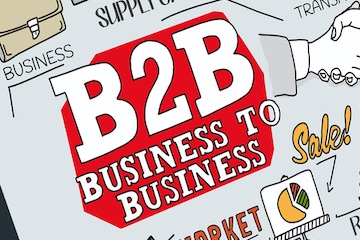Covid-19 is forcing a dilemma on many B2B merchants. They realize a robust ecommerce presence is critical to long-term viability. But they are understandably hesitant to spend money amidst the pandemic on meaningful digital upgrades.
It doesn’t have to be one or the other, however. B2B sellers can invest in ecommerce and preserve cash.
What follows are five ways to improve B2B ecommerce without breaking the bank.
Affordable B2B Ecommerce
1. Use built-in functionality. B2B ecommerce platforms have matured. Sophisticated, pre-built functionality has long been available for B2C sellers. B2B sellers can now enjoy many of the same features — avoiding development time and expense.
For example, integrating a B2B ecommerce platform with existing backend systems has historically been expensive and time-consuming. No longer. Many platforms now have default integrations or access to third-party connectors. The result is more cost-efficient integrations in less setup time.
2. Keep design simple. Off-the-shelf design templates have gone mainstream. Most are easily customized to your brand, resulting in an attractive, highly-functional site without starting from scratch. In my experience, merchants looking to control costs should first select a theme or pre-built template based on user-experience features. Then add your company’s logo, fonts, images, and colors. It adds up to a quick, affordable launch, which is easily improved over time.
3. Limit the scope. The best way to keep B2B ecommerce projects on a budget is to limit the scope. Don’t try to do it all from the beginning.
What is the highest priority? Perhaps it’s improving the branding and user experience. Or maybe it’s enabling online ordering — in four weeks. Defining the priority will help your development team meet deadlines and budgets.
As you consider priorities, ask:
- Which features would improve revenue?
- Which products are the most important?
- How many orders will you process in a day?
- How often does pricing change?
A smaller set of products and related data is easier to get on your site. Your developer can use scripts to move the data if it’s being migrated from another system. Limiting the migration (such as less order history) could lower costs.
It’s possible to forgo integrating a new ecommerce platform with backend software and, instead, enter orders into the backend manually. It could also speed up the process. Integration decisions typically depend on order volume, pricing complexity, and whether you’re replacing an existing site or launching a new one.
Attempting to satisfy all stakeholders can cause a project scope to explode, driving up costs. To control the timeline and budget, put someone in charge of your cross-functional team — developers, managers, sales personnel, customer service — who can coordinate feedback and focus on the priorities.
4. Discounts and incentives. In the wake of Covid-19, ecommerce platforms are offering incentives and discounted rates. Research your options. If a platform doesn’t publicly offer discounts, request them. Many platforms are experiencing revenue declines, too, and are eager to gain customers.
I’ve seen offers such as three months of free licensing as well as discounted flat-fee packages to get up and running quickly with a limited scope. Taking advantage of special offers would limit your upfront costs. You could then reinvest the revenue from your new site into upgrades and new features.
5. Sell direct-to-consumer. Ecommerce allows B2B companies to sell directly to consumers, not just to other businesses. The disruption from Covid-19 is an opportunity to take the leap.
Fast Launch
With the right scope, launching a meaningful B2B ecommerce site is possible in a month or less. The key is to go live, make some money, and add features over time.
—
Editor’s Note: Lori McDonald will present “Lessons from High-performing B2B Ecommerce Sellers,” a Practical Ecommerce webinar, on June 16. Free signup. >







